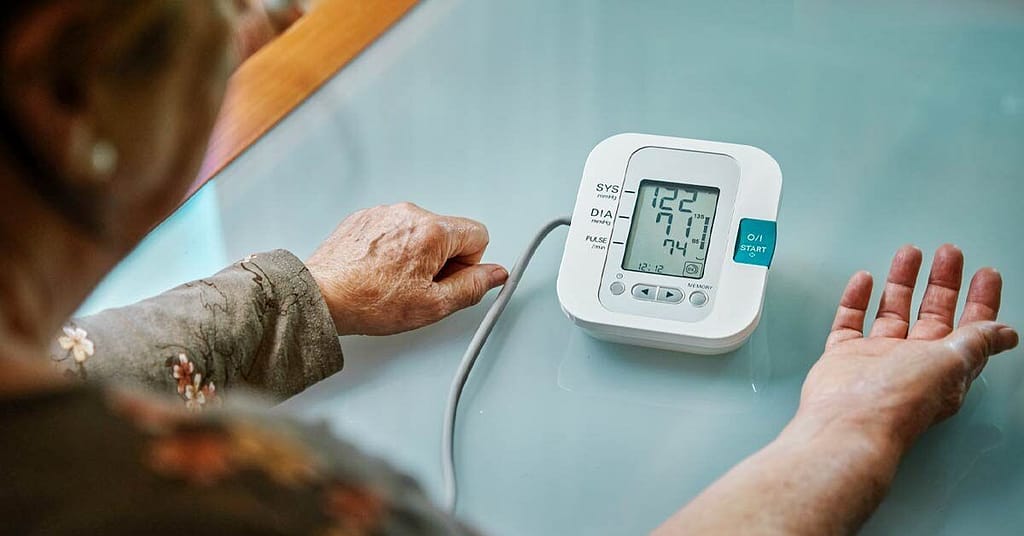Having a systolic or diastolic blood pressure reading that is too high may mean you have high blood pressure. Doctors then categorize high blood pressure into stages.
Blood pressure is a measurement of the extent of the force of blood on your blood vessel walls as your heart pumps. It’s measured in millimeters of mercury (mm Hg).
Systolic blood pressure is the top number in a reading. It measures the pressure on blood vessels as your heart squeezes blood out to your body.
Diastolic blood pressure is the bottom number in a reading. It measures the pressure on blood vessels in between heartbeats while your heart fills up with blood returning from your body.
It’s important to manage your blood pressure.
Hypotension, or blood pressure that’s too low, can cause serious symptoms, like dizziness or fainting. Severely low blood pressure can damage organs by depriving them of blood flow and oxygen.
Hypertension, or blood pressure that’s too high, can put you at risk for:
To manage your blood pressure, you need to know which blood pressure numbers are ideal and which ones are cause for concern.
In general, meeting the criteria for hypotension has more to do with symptoms and specific situations than with exact numbers. But institutions like the National Heart, Lung, and Blood Institute and the United Kingdom’s National Health Service (NHS) consider people hypotensive if their blood pressure falls within this range:
The numbers for hypotension serve as a guide, while the numbers for hypertension are more precise. According to the American Heart Association (AHA), these ranges represent normal, elevated, or high blood pressure:
When looking at these numbers, notice that only one of them needs to be too high to put you in a hypertensive category. For example, if your blood pressure is 119/81, you’d be considered to have stage 1 hypertension.
Blood pressure levels are different for children than they are for adults. Children’s blood pressure targets are determined by several factors, like their age, sex, and height.
Talk with your child’s pediatrician if you’re concerned about their blood pressure. The pediatrician can walk you through the charts and help you understand your child’s blood pressure.
There are a few ways to check your blood pressure. For example, your doctor can check your blood pressure in their office. Many pharmacies also offer free blood pressure monitoring stations.
You can also check it at home using home blood pressure monitors. These are available for purchase from pharmacies and medical supply stores.
The AHA recommends using an automatic home blood pressure monitor that measures blood pressure on your upper arm. Wrist or finger blood pressure monitors are also available but may not be as accurate.
When taking your blood pressure, make sure you take the following steps:
Your reading may indicate a blood pressure problem even if only one number is high. No matter what category of blood pressure you have, it’s important to monitor it regularly. Talk with a doctor about how often you should check your blood pressure at home.
Write the results in a blood pressure journal and share them with the doctor. It’s a good idea to take your blood pressure more than once at one sitting, with 1 minute between each reading.
Your doctor may not treat low blood pressure if you don’t have symptoms.
Low blood pressure is often caused by another health condition or concern, like:
The doctor will likely address that health condition or concern first.
If it’s unclear why your blood pressure is low, treatment options may include:
If you have high blood pressure, your doctor may watch it closely. This is because it’s a risk factor for heart disease.
Having elevated blood pressure puts you at risk for high blood pressure. If your blood pressure is elevated, your doctor may suggest lifestyle changes like eating a heart-healthy diet, cutting back on alcohol, and exercising regularly. These may help bring your blood pressure numbers down. You may not need prescription medications.
If you have stage 1 hypertension, your doctor may suggest lifestyle changes and medication. They may prescribe a drug like:
Stage 2 hypertension may require treatment with lifestyle changes and a combination of medications.
Unmanaged low or high blood pressure may cause serious complications.
Low blood pressure may cause:
High blood pressure is much more common than low blood pressure.
It’s hard to know when your blood pressure is high unless you’re monitoring it since high blood pressure doesn’t cause symptoms until you’re in hypertensive crisis. A hypertensive crisis requires emergency medical care.
Left unmanaged, high blood pressure may cause:
Lifestyle changes can help prevent high blood pressure. Try the following tips.
People with chronic, untreated high blood pressure are more likely to develop a life threatening condition.
If you have low blood pressure, your outlook depends on its cause. If it’s caused by an untreated underlying condition, your symptoms may escalate.
You can reduce your risk of serious complications by managing your low or high blood pressure. This can involve lifestyle changes and prescribed medications. Talk with a doctor to find the best treatment for you.
Read this article in Spanish.
Last medically reviewed on December 9, 2021
Our experts continually monitor the health and wellness space, and we update our articles when new information becomes available.
Current Version
Feb 21, 2023
Written By
Annette McDermott
Edited By
Ashley Williams
Copy Edited By
Connor Rice
Dec 9, 2021
Medically Reviewed By
Debra Sullivan, PhD, MSN, RN, CNE, COI
VIEW ALL HISTORY
Share this article
OUR BRANDS
Blood Pressure Chart: Hypertension, How to Measure, and More – Healthline
